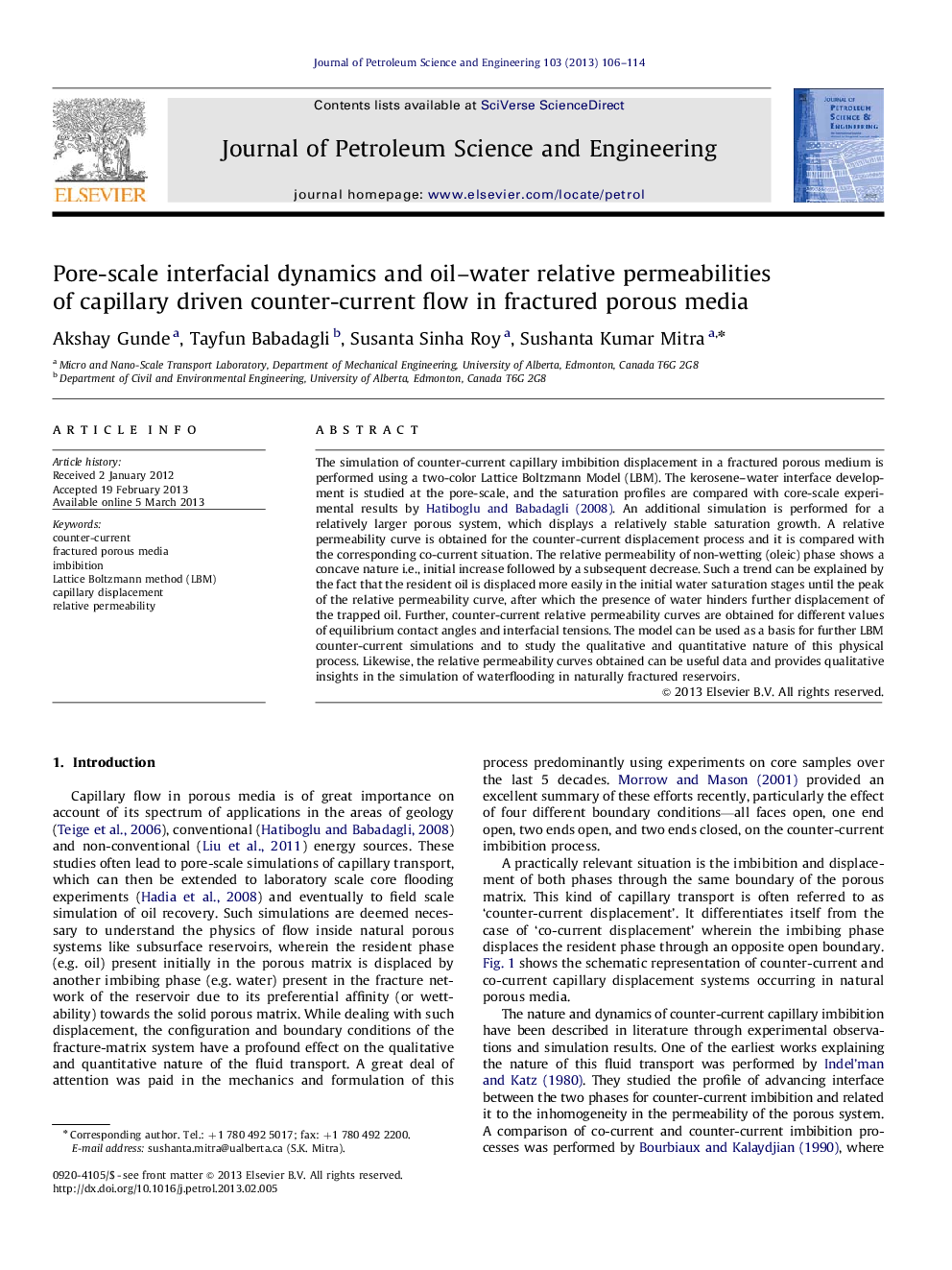| Article ID | Journal | Published Year | Pages | File Type |
|---|---|---|---|---|
| 1755325 | Journal of Petroleum Science and Engineering | 2013 | 9 Pages |
The simulation of counter-current capillary imbibition displacement in a fractured porous medium is performed using a two-color Lattice Boltzmann Model (LBM). The kerosene–water interface development is studied at the pore-scale, and the saturation profiles are compared with core-scale experimental results by Hatiboglu and Babadagli (2008). An additional simulation is performed for a relatively larger porous system, which displays a relatively stable saturation growth. A relative permeability curve is obtained for the counter-current displacement process and it is compared with the corresponding co-current situation. The relative permeability of non-wetting (oleic) phase shows a concave nature i.e., initial increase followed by a subsequent decrease. Such a trend can be explained by the fact that the resident oil is displaced more easily in the initial water saturation stages until the peak of the relative permeability curve, after which the presence of water hinders further displacement of the trapped oil. Further, counter-current relative permeability curves are obtained for different values of equilibrium contact angles and interfacial tensions. The model can be used as a basis for further LBM counter-current simulations and to study the qualitative and quantitative nature of this physical process. Likewise, the relative permeability curves obtained can be useful data and provides qualitative insights in the simulation of waterflooding in naturally fractured reservoirs.
► Capillary driven counter-current imbibition in porous matrix is studied with LBM. ► Relative permeability curves for the wetting and non-wetting phases are obtained. ► Dependence of curves on contact angle and interfacial tension is analyzed.
